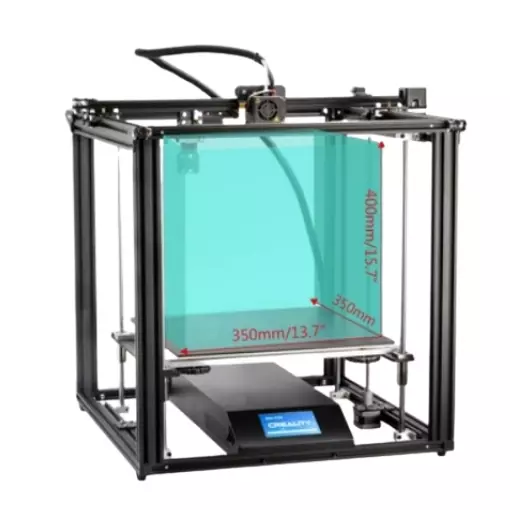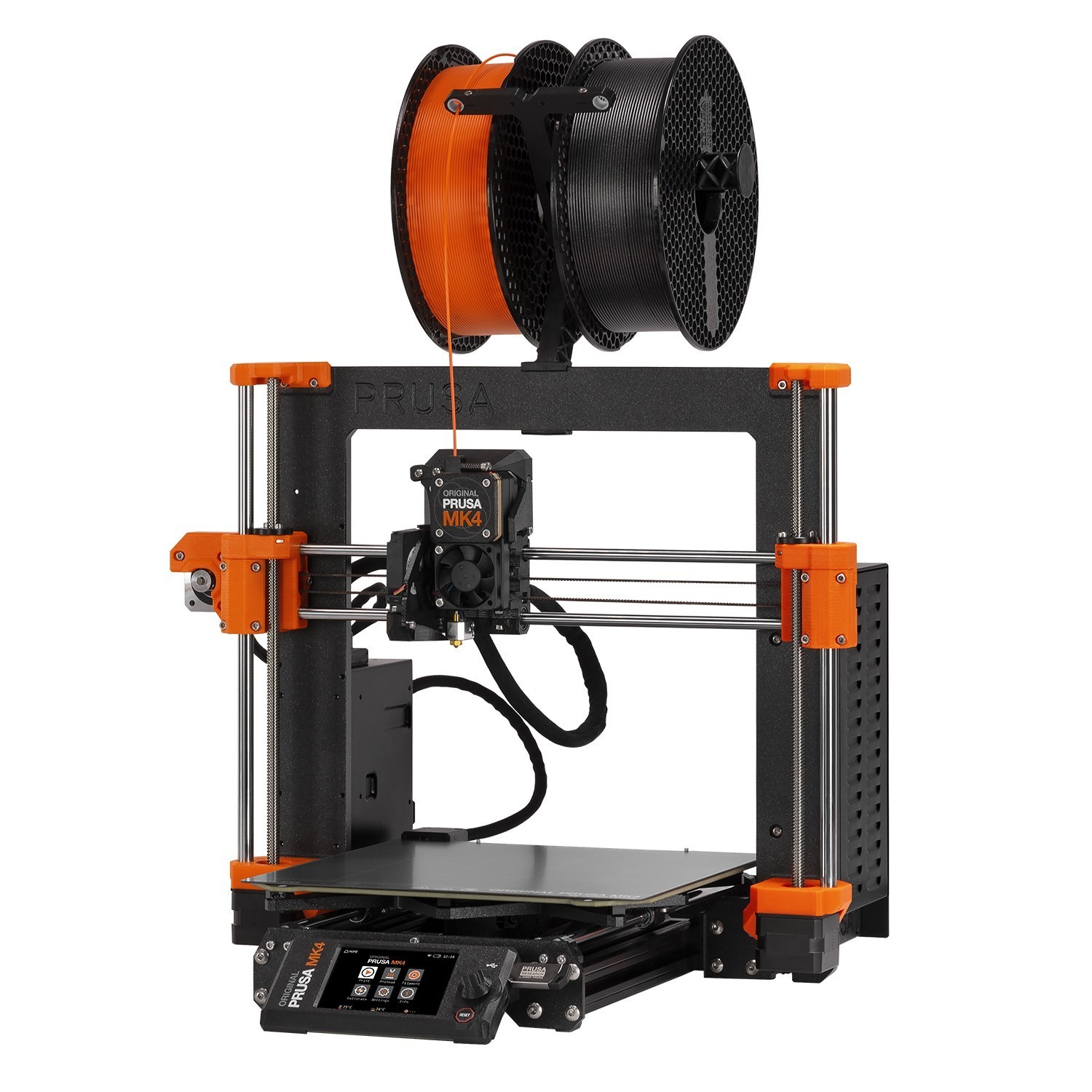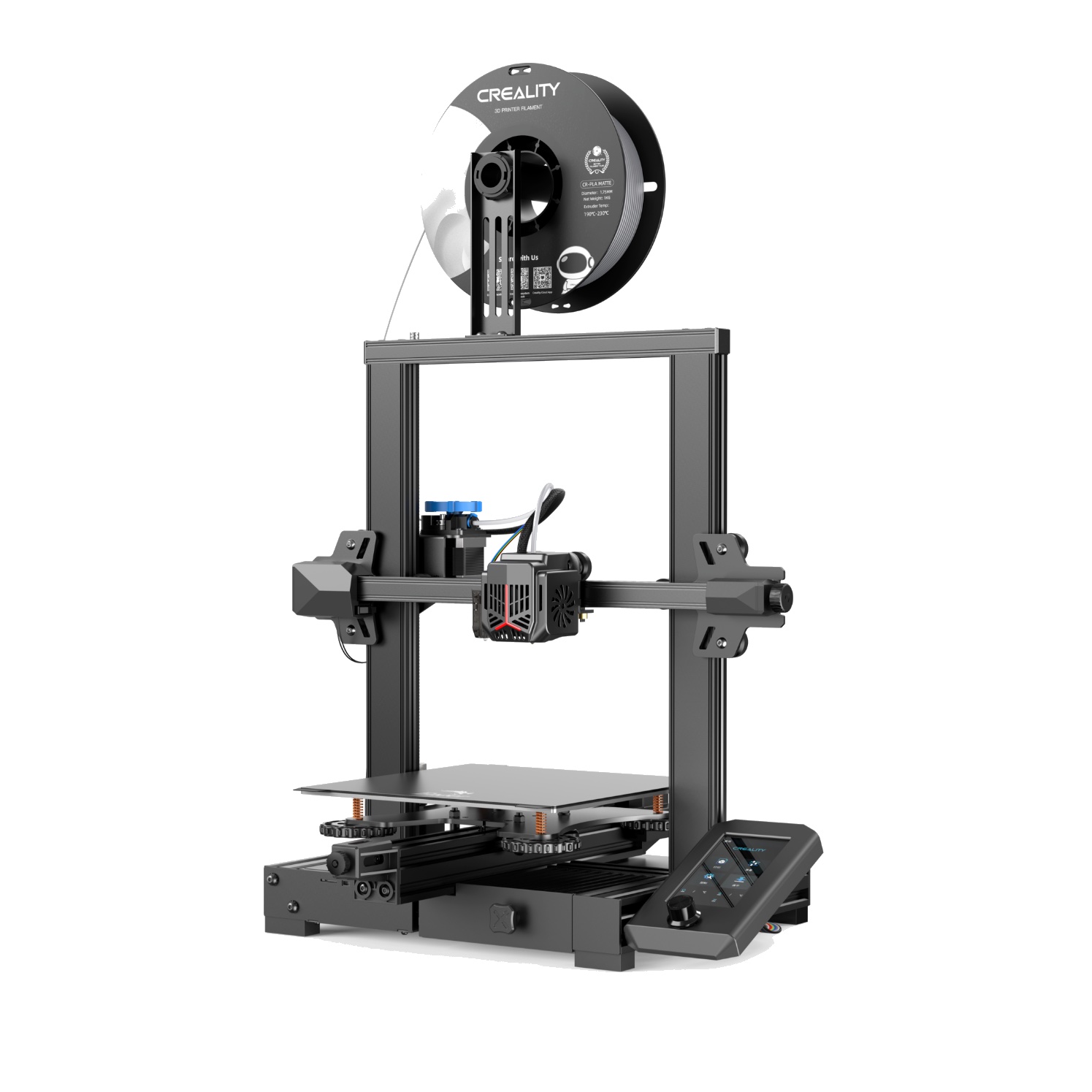Compare Ender 5 Plus vs Original Prusa MK4 3D Printer vs Ender 3 V2 Neo
Comparison between the best 3D printers
Choose the best 3D printer at the best price. The cheapest 3D printers are here.
Buy a 3D printer here with 3D Fila.
 |
 |
 |
|
| Model | Ender 5 Plus[BUY Ender 5 Plus] |
Original Prusa MK4 3D Printer[BUY Original Prusa MK4 3D Printer] |
Ender 3 V2 Neo[BUY Ender 3 V2 Neo] |
| Estimated price | $599,00 | $1099,00 | $310,00 |
| Fabricante | Creality 3D | Prusa | Creality 3D |
| Release Year | 2019 | 2023 | 2022 |
| Print Volume [mm] | 350x350x400 | 250x220x210 | 220x220x250 |
| Printer Size [mm] | 632x619x666 | 500x400x550 | 438x424x472 |
| Weight [kg] | 18,2 | 7 | 9,8 |
| Power Loss Recovery | YES | YES | YES |
| Enclosed printer | NO | NO | NO |
| Bed Leveling | Automatic | Automatic | Automatic |
| Filament End Sensor | YES | YES | YES |
| Bed type | Heated | Heated | Heated |
| Power supply system | Bowden | Direct Drive | Bowden |
| Standard nozzle | 0,4 | 0,4 | 0,4 |
| Maximum Nozzle Temperature [°C] | 260 | 300 | 260 |
| Maximum Bed Temperature [°C] | 100 | 120 | 100 |
| Maximum printing speed [mm/s] | 180 | 180 | 80 |
| Filament holder | YES | YES | YES |
| Camera for supervision | NO | NO | NO |
| Recommended filaments | PLA, TPU, ABS, PETG | PLA, ABS, PETG, PC, Nylon, Tritan, PP | PLA, PETG |
| Recommended slicers | Cura, Simplify, Slic3r | Cura, Simplify, Slic3r, IdeaMaker, PrusaSlicer e outros | Cura, Simplify, Slic3r, IdeaMaker |
| Maximum Resolution [mm] | 0,1 | 0,1 | 0,1 |
| Processor | 32 bits | Custom 32-bit xBuddy electronics with STM32 | 4.2.2 mainboard |
| Display | Touchscreen TFT 4,3'' | Display touchscreen 3,5'' | Display touchscreen 4,3'' |
| Power Supply | 24V / 504W | 240 W | |
| Connectivity | SD / USB | USB / Wi-Fi / internet via Prusa Connect | SD / USB |
| Operating systems | Windows, Mac, Linux | Windows, Mac, Linux | Windows, Mac, Linux |
| Date of registration in the system | 2021-04-14 | 2023-06-06 | 2022-12-09 |
| Release date | 2019 | 2023 | 2022 |
| Extra features | The Ender 5 Plus offers a large print volume (350x350x400 mm) and fast assembly. It includes a BLTouch sensor, but with range limitations. It stands out for its dimensional accuracy, although it requires adjustments to the slicer settings. Despite the noise, its integrated design saves space, and includes features such as a filament sensor and power resumption. Ideal for large projects, it requires refinement in the settings for high-quality prints. | The Original Prusa MK4 stands out with automatic first-layer calibration via Loadcell sensor, high-speed enabled by Input Shaper and Nextruder for precise prints. It includes quick-change nozzles, customizable UI, and Ethernet/Wi-Fi connectivity. It supports a wide range of materials, from PLA to flexibles. Equipped with a 32-bit xBuddy mainboard and precise stepper motors, it offers exceptional print quality, enhanced security, and remote printing options via Prusa Connect. | The Ender 3 V2 Neo printer stands out for its automatic bed leveling with the CR Touch system, ensuring high-quality initial layers. It features an all-metal Bowden extruder for increased durability and improved filament handling. Its flexible, PC-coated magnetic build plate makes it easy to remove prints and is durable and easy to clean. It also includes a new user interface with model preview and an updated gantry design. The Ender 3 V2 Neo maintains the same build volume and temperatures as the previous version, supporting popular filaments such as PLA and ABS. It features a quiet 32-bit mainboard and additional features such as a filament sensor, print recovery, simple 3-step assembly, an integrated toolbox, and belt tensioners. |
| Support for multiple colors and materials (AMS and CFS) | NO | NO | NO |
Notes * |
|||
| Cost-benefit | 6 / 10 | 6 / 10 | 7 / 10 |
| Hardware | 2 / 10 | 3.2 / 10 | 2.8 / 10 |
| Screen | . | . | . |
| Print volume | 4 / 10 | 3 / 10 | 3 / 10 |
| Performance | 1 / 10 | 1 / 10 | 0 / 10 |
| [BUY Ender 5 Plus] | [BUY Original Prusa MK4 3D Printer] | [BUY Ender 3 V2 Neo] |
Conclusion |
| In conclusion, the comparison of the Ender 5 Plus, Original Prusa MK4, and Ender 3 V2 Neo 3D printers reveals distinct strengths and trade-offs suited to varying needs and budgets. The **Ender 5 Plus** offers a substantial print volume, making it ideal for large projects, coupled with decent dimensional accuracy. While it provides reliable features like power loss recovery and a filament sensor, it falls slightly behind in performance due to the need for slicer setting adjustments and a relatively noisy operation. Its cost-effectiveness is moderate, aimed at users seeking volume without sacrificing quality entirely. On the other hand, the **Original Prusa MK4** stands out for its advanced automated features and versatile material support. With superior print quality and connectivity options, it is well suited for hobbyists and professionals who prioritize precision and innovation in their prints. However, this comes at a higher price point, which may not justify the investment for casual users or newcomers to 3D printing. Lastly, the **Ender 3 V2 Neo** emerges as the most budget-friendly choice, providing essential features like automatic bed leveling and ease of use for beginners. Its compact design and streamlined setup make it a solid entry-level option, albeit with a smaller print volume and limited material compatibility compared to its competitors. When choosing among these models, consider your specific printing needs, budget constraints, and whether you prioritize volume, advanced features, or affordability. Each model presents unique advantages, catering to different audiences in the evolving landscape of 3D printing. |

